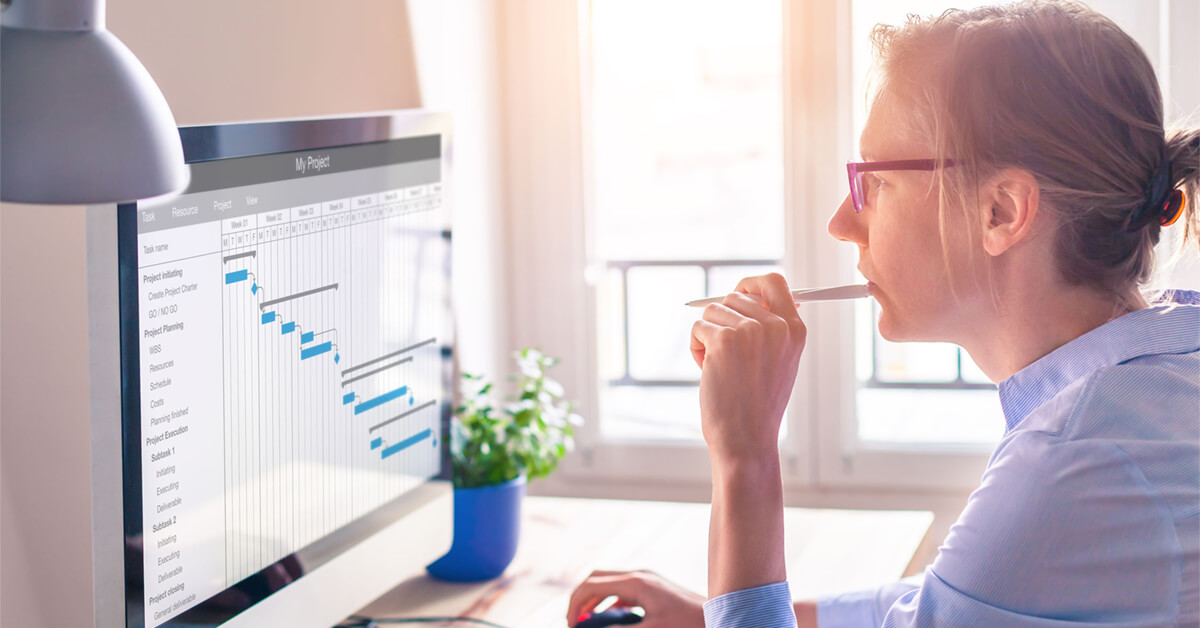While working from home can be convenient and productive, it’s not without its distractions. According to a survey of 1,000 workers by Glassdoor, the top distraction that employees face during the workday is TV. Furthermore, only half of employees feel confident that they can maintain their productivity levels when working remotely as opposed to commuting to the office. Yet it is possible to manage your schedule as a remote worker in a way that maximizes productivity and removes distractions.

Follow these steps to manage your schedule like a pro, even when working remote.
Identify your most productive hours and reserve them
The first step to take back your productivity is to know yourself. Know when you are the most focused and ready to perform. Some people hit the ground running in the morning while others hit their groove in the afternoon.
Take your most productive time periods and block them out on your calendar. Prevent people from booking meetings and don’t schedule calls or chat with anyone during this time. With this step, you can create an interruption-free zone for yourself to catch up on your work when you know you’re most likely to be productive.
Create a fake commute
For many, one of the best parts of working remotely is the lack of commute. Hour-long drives are replaced with later alarms or more time for breakfast. However, that commute may have created a mental health buffer between work and the office.
During your commute, your brain transitions into work mode (or away from it at the end of the day), explains Dr. Justin Ross, a clinical psychologist. This allows you to better focus at work and relax at home. However, when your home is your work (and vice versa), it’s hard to turn off the feelings of guilt and stress that you need to be doing something.
Ross recommends creating a fake commute, or a daily ritual that allows you to transition your mind. This could be a walk around the block or a series of stretches before work. These few moments can prepare you to be productive and focused, without the long commute.
Limit how often you check your email
Your home isn’t the only source of distractions in the remote workplace. If you keep your email open on a second screen (or even in an additional tab) you create distractions for yourself with every new ping and inbox notification that arrives.
“One thing you should do is recognize there is a difference between being responsive and instantaneously responsive,” says Laura Vanderkam, a productivity expert. “You can be checking messages frequently while still having some time that is free from messages.”
Break the habit of keeping your email open. Check it at the start of the day, at the end of the day, and when you take breaks in between work. This allows you to respond to questions in a timely manner without stopping every few minutes to address an issue and getting distracted in the process.
Group your meetings into blocks
Do you feel like you can’t get into a groove at work because you’re constantly interrupted with meetings? If so, the future workplace might be ideal for your productive work style.
As more Americans receive vaccines, some companies are announcing plans for hybrid work models, where employees are in the office a few days each week. In March 2021, Ford announced that employees will return to the office for in-person meetings and group projects. They will continue their independent work at home.
Follow this model with your remote work. For example, designate Tuesday and Thursday as meeting days and set up your regular check-ins at those times. This creates open blocks during the week to focus on work without meetings cutting into that time.
Review your fragmented time
Matt Martin, CEO of Clockwise, identified fragmented time as small periods between meetings or events throughout the day. You might have 15 minutes in-between meetings or 30 minutes at the end of the day that’s free. Fragmented time is challenging because you can’t fit meaningful work during that period, which means those minutes often go to waste.
However, there are many things you can do during this fragmented time. You can use those breaks to check your email, you can take an intentional stretch break, or you can use the space to tie up loose ends.
The goal of looking at these breaks is to be intentional with what you do with your schedule. You don’t have to eliminate fragmented time, but you can have a plan for it so that time doesn’t go to waste.
Evaluate weak spots from your remote work
Everyone has their own remote work challenges. Take time to understand where your schedule is getting messed up in the remote work process and take steps to get it back on track.
Don’t forget to communicate these changes to anyone who will be affected by them. And remember, you control your schedule and set your priorities, no matter how many people try to steal your attention throughout the day.
Post A Reply